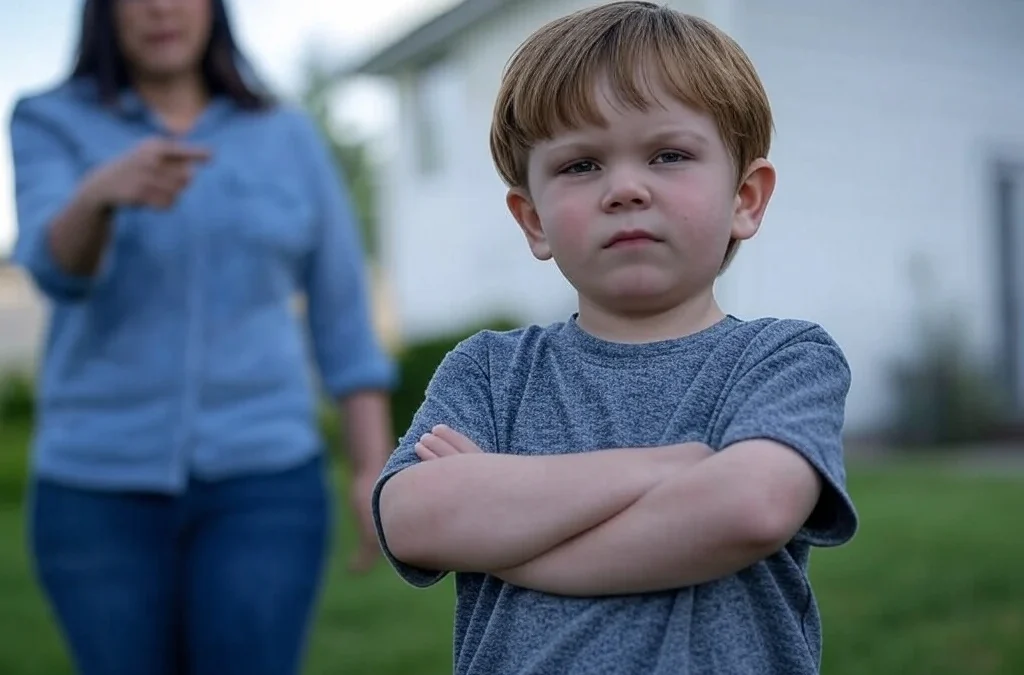Have you ever been in a meeting where everyone seems to agree, but you have a nagging feeling something isn’t right? This is a classic example of groupthink, a psychological phenomenon where the desire for harmony and conformity in a group leads to poor decision-making. It happens more often than we might think, affecting everything from business decisions to social movements. When everyone is on the same page, it might feel like the safest route, but it can sometimes lead to disastrous outcomes.
Groupthink is not just a term psychologists throw around; it’s something that impacts our everyday lives. Imagine a jury deciding on a case or a team launching a new product. When groupthink takes over, critical thinking takes a backseat, and the group may ignore potential problems. Recognizing this pattern is the first step to avoiding its pitfalls. In this article, we’ll explore 20 real-world examples of groupthink, shedding light on how it works and how you can spot it in your own experiences.
What is Groupthink?
Groupthink is a psychological phenomenon that occurs when the desire for harmony or conformity within a group leads to flawed decision-making. Instead of fostering open discussions and diverse ideas, groupthink pushes members to prioritize agreement over critical thinking. This often results in silenced dissent, ignored risks, and poorly considered outcomes.
Groupthink thrives in environments where loyalty and cohesion are highly valued, such as tightly knit teams, influential social circles, or hierarchical organizations. Common signs include a false sense of invulnerability, collective justification of decisions, and an unquestioned belief in the group’s morality. It can happen in high-stakes situations, like corporate boardrooms, or everyday moments, like group chats.
Avoiding groupthink is crucial for making better decisions. Encouraging open dialogue, seeking outside perspectives, and fostering a culture of critical thinking are key to breaking free from its influence. By recognizing its symptoms, individuals and organizations can create environments where diverse opinions are not just accepted but valued.
The Best Real-Life Examples of Groupthink
Groupthink happens when a group values harmony and agreement over critical thinking, often resulting in poor decisions. It can appear in many areas of life, from workplaces to historical events. Below are twenty clear examples to show how groupthink works and its impact.
1. The Challenger Space Shuttle Disaster
In 1986, NASA launched the Challenger shuttle, despite warnings from engineers about potential issues with the O-rings in cold temperatures. The decision-making team ignored these warnings because they wanted to stick to the schedule and avoid conflict. This led to a tragic disaster. Groupthink silenced important voices, prioritizing agreement over safety.
2. The Bay of Pigs Invasion
In 1961, U.S. officials planned an invasion of Cuba, confident it would succeed. Critics in the group stayed silent to avoid being labeled as unpatriotic or disruptive. The plan failed miserably. This example shows how groupthink can lead to overconfidence and poor decisions when dissenting opinions are suppressed.
3. Corporate Scandals
Large companies like Enron have experienced groupthink in their leadership teams. Executives encouraged risky financial practices, while employees who noticed the dangers felt pressure to stay quiet. Everyone followed the crowd to maintain group unity. Eventually, this led to the company’s collapse, harming thousands of workers and investors.
4. High School Peer Pressure
In a high school, a group of friends decides to skip class to attend a party. One student disagrees but doesn’t speak up, fearing rejection. This is a common example of groupthink, where fear of losing social acceptance overrides personal judgment.
5. Stock Market Bubbles
During financial bubbles, like the dot-com bubble, investors rush to buy into a market, believing it will keep rising. Few question the logic behind the craze. Those who warn of risks are ignored or mocked. When the bubble bursts, the herd mentality reveals how groupthink led to poor financial decisions.
6. The Asch Conformity Experiments
In the 1950s, Solomon Asch conducted experiments demonstrating groupthink in action. Participants were asked to match line lengths; when confederates all gave the wrong answer, many participants conformed, ignoring their own perceptions. This showed how group pressure can lead individuals to question their own judgment.
7. Product Development Failures
Companies sometimes release products without proper testing because team members don’t want to challenge management. For example, when Samsung rushed the Galaxy Note 7 to market, warnings about battery defects were overlooked. The result? Exploding phones and a massive recall. Groupthink led to costly mistakes.
8. War Decisions
In the lead-up to the Iraq War in 2003, key policymakers in the U.S. believed Iraq had weapons of mass destruction. Many officials voiced no opposition, despite weak evidence. They feared being isolated or labeled unpatriotic. Groupthink contributed to a costly and controversial conflict.
9. Social Media Trends
On social media, trends can quickly spiral into groupthink. For instance, cancel culture often leads large groups to attack someone based on incomplete information. Many jump on the bandwagon to fit in, even if they don’t fully understand the issue. This shows how groupthink thrives in online environments.
10. Historical Witch Hunts
During the Salem Witch Trials in the late 1600s, fear of witches spread quickly. Communities accused neighbors to conform to the group’s hysteria. Rational voices were drowned out by fear and mob mentality. This is a classic case of groupthink leading to devastating consequences.
11. Sports Fan Behavior
In crowded stadiums, fans can quickly adopt mob-like behaviors, such as booing referees or chanting insults. Individuals might not feel strongly, but they join in to fit with the crowd. Groupthink amplifies collective behavior, sometimes leading to violence or chaos.
12. Corporate Hiring Practices
A hiring team might focus on cultural fit over diverse ideas. For example, if everyone in the group agrees that a certain personality type is “perfect” for the team, they may overlook candidates with different but valuable skills. This kind of groupthink can stifle innovation and create a narrow work culture.
13. Fraternity Hazing
In college fraternities, hazing rituals often continue because no one wants to challenge the group’s traditions. Even when some members feel uncomfortable, they go along with it to avoid being labeled weak. This shows how groupthink pressures individuals to follow harmful practices.
14. Office Dress Codes
A company might enforce an outdated dress code because leadership assumes everyone agrees it looks professional. Employees may grumble privately but stay silent during meetings. Over time, groupthink keeps the policy in place, even when it no longer makes sense for modern work environments.
15. Sports Team Strategies
A coach may insist on sticking to a losing strategy because the team agreed it was the best plan before the game. Players who recognize the flaw might hesitate to speak up. Groupthink can prevent teams from adapting quickly during high-pressure situations.
16. Fashion Trends
Sometimes, people follow fashion trends that they don’t personally like because they fear standing out. For example, a group of friends might all buy the same expensive sneakers, even if some don’t want to. They follow the trend to avoid being judged as “out of style.” Groupthink shapes their choices.
17. Political Campaigns
During election campaigns, advisors often hesitate to challenge the candidate’s decisions, even when they foresee potential issues. They may fear being seen as disloyal. This kind of groupthink can lead to strategies that alienate voters or fail to address key issues.
18. Family Decisions
A family planning a vacation might all agree to visit a particular destination because the majority wants it. One member who has a different preference may stay quiet to avoid upsetting others. Groupthink creates a situation where not everyone feels included in the final decision.
19. Military Decisions in World War I
During World War I, generals on both sides often ordered soldiers to launch costly, ineffective attacks because no one in the command structure questioned traditional battle strategies. The result was millions of lives lost in trench warfare. Groupthink prevented creative solutions and prolonged the conflict.
20. Cults and Charismatic Leaders
In cults, members often follow a leader’s directives without question. Charismatic figures like Jim Jones of the Jonestown massacre persuaded followers to act against their own survival instincts. Dissenters were silenced, and the group followed destructive orders because questioning the leader was unthinkable.
Is Groupthink Always Bad? Can It Ever Be Helpful?
Groupthink is often criticized for leading to flawed decisions, but it’s not always entirely negative. In some situations, it can actually be useful. While it’s important to recognize the risks, groupthink can sometimes bring benefits when applied in the right context.
For instance, in emergencies or high-pressure situations, quick agreement can save time and prevent confusion. Imagine a team in a crisis, such as responding to a system failure at work. If everyone aligns quickly on a course of action, the issue can be addressed without delay. In these cases, the shared focus that groupthink brings can be a strength.
Groupthink can also foster unity and cooperation. When a group works in harmony, it can create a positive atmosphere where people feel connected and supported. For example, in team sports, a unified strategy helps players perform better together, boosting morale and leading to success. Similarly, in workplaces, cohesive teams often communicate more effectively and handle tasks efficiently, especially when decisions are routine and don’t require extensive debate.
However, the benefits of groupthink are situational. It works best in environments where decisions are straightforward, time-sensitive, or require minimal innovation. Problems arise when the need for harmony overrides critical thinking in situations that demand creativity or thorough analysis. When dissent is stifled, and alternatives are ignored, groupthink quickly shifts from helpful to harmful.
The key is balance. While groupthink can streamline decisions and strengthen bonds, groups should still encourage critical thinking. By ensuring that consensus doesn’t come at the cost of thoughtful evaluation, teams can leverage the advantages of groupthink without falling into its traps. It’s not about eliminating groupthink altogether, but about knowing when and how to use it effectively.
Understanding the Causes of Groupthink
Groupthink is a psychological phenomenon where the desire for harmony or conformity within a group leads to irrational or dysfunctional decision-making outcomes. Several factors contribute to the emergence of groupthink, making it crucial to understand these causes to prevent its occurrence. One of the primary causes is the presence of a strong, persuasive group leader who sets the tone and direction, often discouraging dissent or alternative viewpoints. This can lead to an environment where group members feel pressured to agree with the leader, even if they have reservations.
Another contributing factor is group cohesion. While a cohesive group is generally seen as positive, it can also lead to groupthink when members prioritize maintaining group harmony over critical evaluation of ideas. This cohesiveness can result in self-censorship, where individuals withhold their dissenting opinions, fearing they may disrupt the unity of the group. Additionally, a lack of clear decision-making procedures can exacerbate the issue, allowing dominant voices to overshadow the more critical analysis needed for sound decision-making.
Groupthink is more likely to occur in isolated groups, especially those that do not seek outside opinions or feedback. This isolation can reinforce the group’s beliefs and assumptions, further reducing the likelihood of considering alternative perspectives. Recognizing these causes is crucial for organizations aiming to foster a culture that values diverse opinions and critical thinking, rather than conforming to a single mindset.
The Impact of Groupthink on Decision Making
Groupthink can have significant negative impacts on decision-making processes, leading to poor outcomes that might otherwise be avoided with a more thorough consideration of alternatives. One major impact is the reduction in creativity and innovation, as group members are less likely to propose new ideas or solutions that deviate from the group’s consensus. This lack of creativity can result in suboptimal decisions that fail to address complex problems effectively.
Moreover, groupthink can lead to overconfidence in the group’s decisions, often referred to as an illusion of invulnerability. Groups experiencing this illusion may take unnecessary risks, believing that their collective decision is inherently correct. This can result in dismissing potential risks or warning signs that might otherwise have been given due attention.
Additionally, groupthink can lead to moral and ethical lapses, as the pressure to conform might cause individuals to suppress their moral objections to a decision. This can result in unethical decisions that have severe consequences for the organization and its stakeholders. Understanding the impact of groupthink is essential for organizations to implement strategies that encourage diverse opinions and critical evaluation, ensuring that decisions are made based on a comprehensive analysis rather than conformity.
How to Identify Groupthink in Real Time
Spotting groupthink as it happens can help prevent bad decisions and encourage healthier group dynamics. Here are the key signs to look for when you suspect groupthink might be at play.
Common Symptoms of Groupthink
- Self-Censorship: Individuals hesitate to voice concerns or alternative ideas because they fear being judged or causing tension. You might hear phrases like, “I didn’t want to bring it up and derail the plan.”
- Pressure to Conform: Subtle or direct pressure discourages dissent. For example, someone might say, “Let’s all stay on the same page here,” to avoid disrupting group unity.
- Ignoring Risks or Warnings: The group brushes aside obvious red flags or concerns, choosing instead to stick with the initial plan.
- An Illusion of Agreement: Silence is often mistaken for consensus. Just because no one speaks up doesn’t mean everyone agrees.
Warning Signs in Different Settings
- Meetings: If decisions are made too quickly with little debate, it’s a red flag. Watch for moments when only a few people dominate the discussion while others stay silent.
- Team Projects: A group overly confident in its decisions may avoid seeking feedback or exploring alternatives. Phrases like, “This will definitely work,” without evidence often indicate groupthink.
- Social Groups: In casual settings, groupthink can manifest as peer pressure to align with the group’s opinions or activities, even if individuals have doubts.
A Simple Checklist to Spot Groupthink
Ask yourself these questions when working with a group:
- Is anyone afraid to express their thoughts?
- Are concerns or risks being dismissed without proper discussion?
- Does the group assume agreement without explicitly checking in?
- Are decisions being rushed or overly influenced by a leader?
- Is there resistance to seeking outside opinions or perspectives?
Recognizing these symptoms in real time can help you intervene before groupthink leads to poor outcomes.
Groupthink in Digital Communities and Social Media
Nowadays, groupthink extends beyond physical spaces into online communities and social media platforms. With algorithms often curating content to reinforce existing beliefs, users can find themselves in echo chambers. These environments can intensify groupthink, as individuals are exposed mainly to opinions that mirror their own.
Social media platforms can foster a sense of belonging. People gather in groups with shared interests or beliefs. But there’s a downside. Discussions can quickly become one-sided, with members reluctant to express dissenting opinions for fear of backlash or ostracism. This can lead to the spread of misinformation, as false ideas go unchallenged.
It’s important for users to actively seek out diverse perspectives. Following a range of voices and engaging in respectful debates can mitigate the effects of groupthink. Platforms also play a role. By designing algorithms that promote varied content, they can help break down the silos that contribute to groupthink. This creates a healthier and more informed digital community.
The Most Popular on BitGlint

Top 100 Personal Items List
Everyone uses personal items in their daily lives, often without even thinking about them. From the moment you wake up...

30 Defiance Examples & Meaning
Defiance is something most people experience at some point in life. You feel it when you say no to something that...

Top 30 Desire Examples & Definition
Desire is a powerful force that drives much of human behavior, shaping our goals, dreams, and everyday decisions. It's...

100 Non-Digital Things List
In everyday life, there are still hundreds of objects, tools, and materials that exist completely outside the digital...

30 Examples of Attention & Definition
Have you ever noticed how a catchy tune can grab your attention, even when you're busy doing something else? It's...

60 Cultural Traditions Examples & Definition
Cultural traditions are part of daily life - whether people realize it or not. They shape what we eat, how we...

Top 30 Intimacy Examples & Meaning
Intimacy goes beyond physical touch or romantic moments. It’s about closeness, trust, and connection. In everyday...
Get Inspired with BitGlint
The Latest
40 Emotional Value Examples & Meaning
Why do some messages stick — while others are forgotten? Why do people choose one brand over another, even when the product is the same? The answer often comes down to emotional value. Emotional value is what makes a message feel human. It’s the emotional connection...

30 Teasing Examples & Definition
Teasing is a common part of human interaction. People tease in different ways, for different reasons. Sometimes it is friendly. Sometimes it can hurt feelings. Understanding what teasing means and seeing clear examples helps everyone handle these moments better....
40 Thought Experiments for Curious Minds
Some questions can’t be answered with a simple yes or no. Some problems don’t have a clear solution. That’s where thought experiments come in. They aren’t just old ideas from philosophy books. Thought experiments are tools we still use to think through problems, test...
30 Fascinating Fate Examples from History & Real Life
Have you ever wondered why certain events in life seem too perfect to be just a coincidence? Like bumping into an old friend in a faraway city or meeting someone who changes your life in unexpected ways. These moments often make us pause and think about the mysterious...

